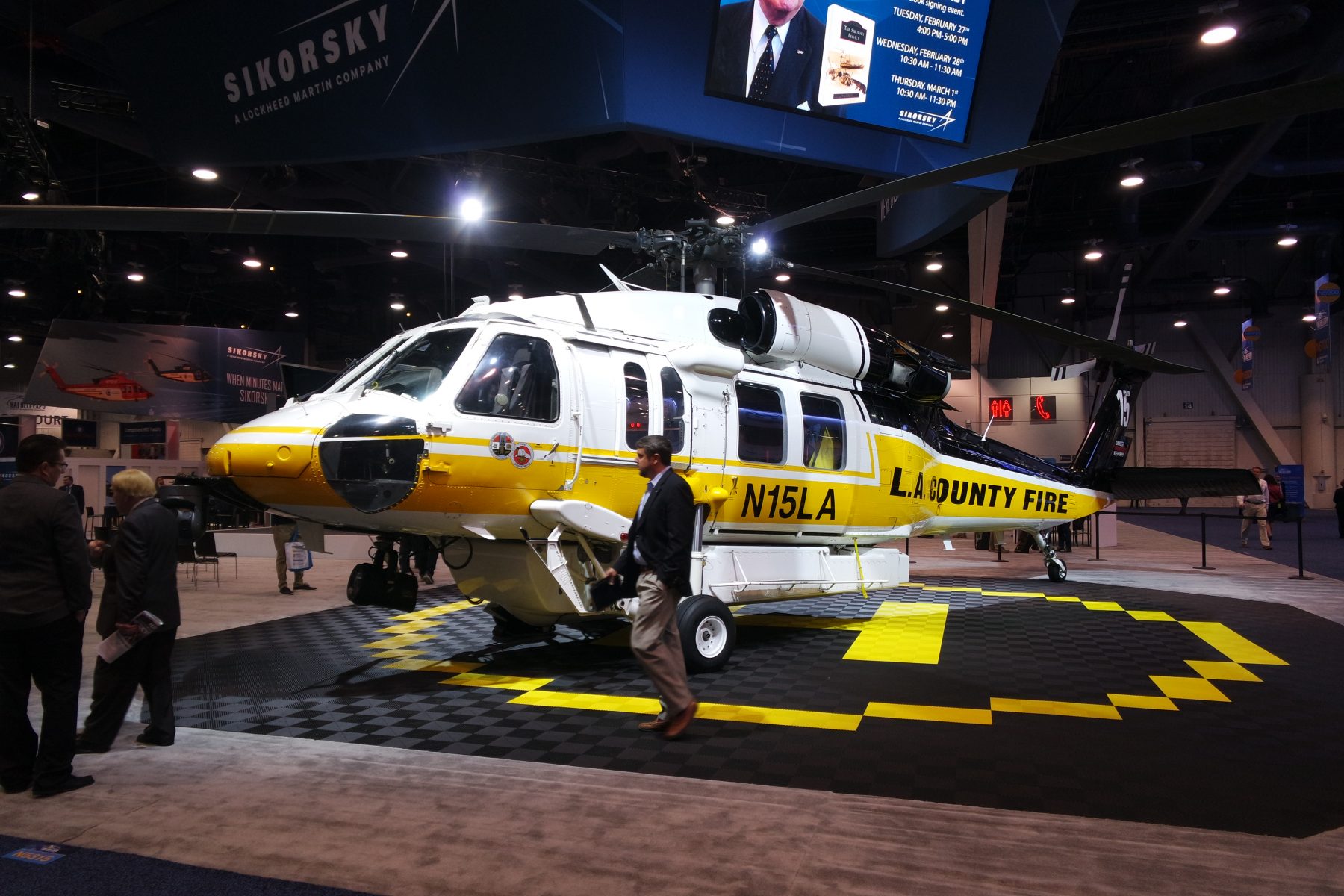Heli Expo 2018: The OEM perspective

On the day before Heli Expo opened its doors to the public in Las Vegas, a group of movers and shakers in helicopter transactions met in a small conference room to talk about financing.
One of the most illuminating panels was the OEM perspective panel, where Dina Halvorsen, Director, strategy and business development at Sikorsky; Chuck Evans, head of marketing at Bell and; Sebastien Delmaire, vice president of strategy at Airbus, gave a view from the manufacturers’ side.
The overall picture was positive across the board. From Sikorsky’s perspective, flight hours are on the rise and delivery targets have been hit; Bell has been seeing good delivery numbers and a book-to-bill ratio of 1:1; and Airbus is hopeful about its Vtol and air-taxi projects.
Sikorsky’s heavy offering, the S92, flew more hours in 2017 than in 2016 despite the downturn the heavy helicopter market saw last year. The S92 saw a lot of business in the oil and gas market in 2017 despite the downturn due to weaker oil and gas prices . Whilst heavy helicopters cost more to operate than the new super-medium class, there are a lot of S92s on the market and they are cheap.
Commenting on the oil and gas market, Ms Halvorsen said: “We understand the oil and gas cycle and we are seeing signs that the market is recovering… but we are looking outside of oil and gas to diversify.”
One example of Sikorsky’s diversifying is what it is doing with its ex-military Black Hawk Helicopters. The manufacturer repurposed 10 of its Black Hawk’s for firefighting operations in Australia last year.
Sikorsky has decided not to pursue the emerging super-medium helicopter market due to possible oversaturation. With Leonardo, Bell and Airbus all bringing forward a super-medium offering over the past few years, Sikorsky is cautious on whether there is room in the market for a fourth offering.
Turning to Bell, its head of marketing Chuck Evans is riding high off the company’s recent rebranding. The company’s new image as a tech-focused aviation innovator was made apparent when the discussion turned to drones and Vtols. “As OEMs we need to be disruptive forces in on-demand availability and the drone market” he said.
“People might think this is a romantic idea, but we are all working toward it… partnership is a key part of pursuing these goals and these technological advances will happen with or without us.”
He also suggested that the introduction of the super-mediums into the market will be a “catalyst” in the retirement of legacy aircraft, as operators realise the benefits of lower operating costs that the super-medium helicopters such as the Bell 525 offer.
Sebastien Delmaire, vice president of strategy and business for Airbus, was also keen to talk about his company’s new Vtol drone project. Airbus has set up a new subsidiary in Silicon Valley called A3 to lead the development.
Mr Delmaire said: “I was sceptical about bringing in the guys from Silicon Valley, but we partnered with them to work on the drone. At the beginning it was very tough — the discussions between the Silicon Valley and Airbus people were tough. But bringing in new minds is important.”
He also highlighted the recent changes in the US emergency medical services (EMS) market that has led to a wide range of helicopters operating under one fleet.
Delmaire said: “There is some saturation in the US. The market has been changing and there has been consolidation, but this isn’t translating into sales. We are seeing operators with 20 different types of aircraft which is a disaster for service and manufacturing. It is up to the OEMs to pitch to customers why they should renew and standardise their fleets – we are looking closely at this market.”






